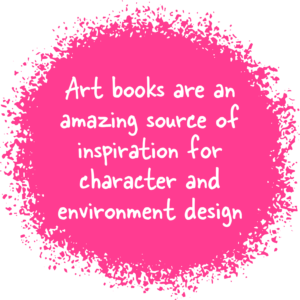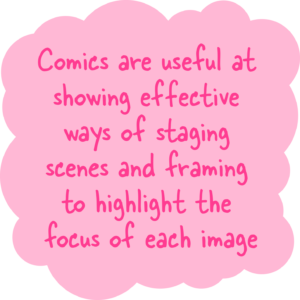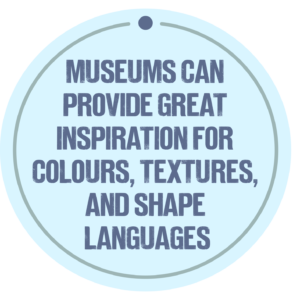As an animation aficionado, I love keeping up to date with all kinds of animation from studios big and small. But sometimes, I find inspiration directly related to what I’m working on leaves me feeling that all the ‘good’ ideas are already taken, and what I make isn’t going to be as unique or amazing as the work that inspired it – which isn’t a great way to start a project.
This is where I find that *adjacent* inspiration can really help.
But before we begin… What is animation? Unlike video, which mostly involves filming real people in real environments, animations are made up of lots of still images (called frames) that are sequenced to create the illusion of movement. Traditionally, this was achieved by drawing individual frames by hand and photographing them. Nowadays, technology helps us. It allows us to easily combine elements like photographs, drawings and text. That’s why animation is widely used in combination with graphic design and video to advertise and communicate messages in clear and creative ways.
Anything that moves that hasn’t been filmed with a camera is a work of animation. It’s not just in Disney movies – animation exists within every app and every videogame… So why not use all these forms of animation as inspiration?
I call this adjacent inspiration, which has still been thought out and designed by a creative (and maybe even animated) just within a slightly different environment to what I’m working on. It works really well for me as someone who struggles to apply inspiration from things I see in nature or everyday life. Without thinking about it, I’ll adapt and evolve the concepts I’ve found in adjacent inspiration to work within the context of the animation I’m creating, giving me some great initial ideas to hit the ground running.
I’m effectively Goldilocks and these sources of inspiration are just right – they aren’t too close to my work, but they’re also not totally removed from it. And they bring me joy – which always helps!
Check out my favourites… 
Video Games
There are so many overlapping elements between animation and video games.
I love to take inspiration from character and environment designs – art books are amazing for this as they’re full of different designs for everything, even background elements that often go unnoticed. The general art direction of games is also really influential because just like in animation, it can vary from cartoony 2D styles to cel shaded 3D styles (similar to the recent Spiderverse films). The UI elements (like level menus, health bars or maps) of games can also be interesting to look at, as when they’re done well they embody the world of the game strongly while communicating lots of information clearly – something I’m constantly trying to do when creating explainer or campaign animations.
Comics 
Similarly to video games, comic books overlap quite a bit with animation, just in a slightly different way. The visual styles and character designs are great of course, but comics are also useful at showing us effective ways of staging scenes and framing them effectively to highlight the focus of each image. They’re the masters of the golden ratio, which is a mathematical ratio used to design layouts that are pleasing and easy to follow with the human eye, as it reflects shapes and compositions found in nature. Comics also show us how to represent movement and expression in easily recognisable ways despite being a static medium. This can be very useful for storyboarding as well as animation itself.
Museums 
Going to a good old fashioned museum can be great inspiration for colours, textures, and shape languages (the use of shapes to inherently express qualities and emotions like squares communicating stability and strength, and circles communicating safety and peace). Paintings and artefacts can sometimes be a little too far removed for me to utilise as direct inspiration for animation (though they work really well for others so you never know!). A great middle ground for me is the Mechanical Art and Design museum in Stratford upon Avon. I recently visited it and was mesmerised by the level of storytelling achieved in the exhibits, despite the automaton’s movements often being limited to short loops.
I loved these Day of the Dead Skeletons by Wanda Sowry:
And these Runners with Bees by Peter Markey:
The way the makers manage to create overlapping action, anticipation and overshoot in the movements of the characters with all the constraints of gears and materials like wood is incredibly inspiring to me.
We love creating animations for our clients – there’s something special about using motion to move or motivate people, to make them laugh or encourage them take action.
We’d love to hear where you get your animation inspiration from! Get in touch to let us know: Hello@alivewithideas.com
By Em Green















